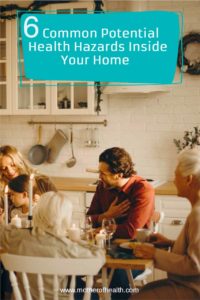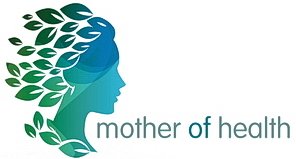Since the pandemic, many of us spend more time at home, so it’s important that our home environment is safe and healthy. In this article, we identify 6 top home safety hazards to help you identify whatever risks can arise so you can stop future disasters and health concerns.
The information is not intended to evoke fear, but to advise you on how to handle these types of situations.
Having lived in your home for years, you may be unaware of certain risks you’ve been living amongst, such as fire hazards, mold, mildew, or even lead exposure.
Especially if you’re searching for your family’s first home, you need to be on the lookout for all the risks and red flags that could indicate a health hazard for your family. Much of these will be identified during the home inspection, making it critical for you to make this a part of your house-hunting process.
Once you’ve been preapproved for a home and toured a variety of properties within your budget, you’ll begin to notice patterns in older homes, like water damage or excessive moisture in the basement, that can pose a threat to your family’s health.
With the help of a professional and with your newfound knowledge of the following hidden health hazards inside the home, you can take preventative action and maintain your family’s health.
6 Top Home Safety Hazards
1. Household Chemicals
Many of your most-used household products contain chemicals that can become life-threatening if they’re ingested by children. Products like surface cleaners, nail polish remover, and toilet or tile cleaners often contain bleach and other VOCs (volatile organic compounds). These can have negative effects on your health in the short- and long term.
For example, you might experience skin irritation, dizziness, and nausea in the short term. Long-term side effects include kidney and liver damage, and increased risk of cancer. To prevent these symptoms, keep products out of children’s reach or experiment with popular natural cleaning product recipes. These are made of ingredients that are safe for babies and pets, and they’re also simple and inexpensive to make.
Family-friendly cleaning & disinfecting starts with Force of Nature. Kills 99.9% of germs with no toxic chemicals.
2. Mold & Mildew
Excessive moisture can produce mold. In your home, a violent thunderstorm, damp winter, or muggy summer could be the reason your walls are covered in this type of fungi.
Mold is a type of fungi that can live on most household surfaces. Lots of different textures, surfaces, and fabrics can have mold:
- Paper
- Wood
- Glass
- Plastic
Leaks, floods, windows with condensation, and dark, moist areas are suitable for mold growth.
Additionally, the mold itself can appear as white, yellow, black, green, or blue. Sometimes, it can appear as a stain on the wall or spots.
Breathing in moldy air is harmful to your health. Respiratory protection is vital against the health effects of this toxin. If you are prone to allergies, your reaction to mold in your home may increase:
- Sneezing
- Itchiness or irritation in the nose and throat
- Sensitive eyes
- Nasal drainage or blockage
There could also be a risk for infection if the mold is rampant especially if you have a pre-existing condition that makes you more vulnerable, or you have been exposed to the mold for a long time. You could need mitigation from a cleaning service.
In some cases, you may be able to purchase mold-specific cleaning products to rid your home of mild episodes.
Mildew
Another common type of mold that can produce an equally foul odor and similar side effects is mildew.
Both mold and mildew are known to intensify asthma in children. You might also react through rashes, allergy symptoms, coughing, and eye irritation.
Treat excessive moisture by utilizing a dehumidifier in your bathrooms, basements, under windows, and around air conditioners. If you’re seeing mold that spans a lot of square footage, consult a professional mold removal specialist to ensure full eradication and prevent regrowth.
3. Radon
Radon is a gas that forms from the natural breakdown of uranium in rock and soil. This gas can become trapped in parts of your home. Most notably, cracks in your home’s foundation can allow radon to enter.
Another aspect of radon health effects is the levels and duration of exposure.
Lung cancer is one of the leading diseases in the U.S. Among genetic and environmental risk factors, radon worsens the likelihood of developing lung cancer.
Radon is known to be colorless, tasteless, and generally undetectable without testing. The radon decay particles that you inhale will remain in your lungs and damage cells. Consequently, cells mutate into lung cancer.
You will first need to test for radon levels in your home to see how dangerous they are. However, you can stop radon exposure through mitigation systems. These work by funneling the radon to a safer outlet to stop it from coming into your home. It’s a necessary step to removing radon, which you cannot prevent by simply sealing off cracks.
4. Indoor Plants
While indoor plants serve many benefits, such as improving air quality, productivity, and overall mood, certain types have their downsides. Some flowers, in particular, are poisonous if ingested by children or pets. Examples include lilies, aloe vera, poinsettias, rubber plants, and snake plants.
In fact, the water sitting inside the vase where you put those old cut flowers from Valentine’s Day carries dozens of bacteria. That said, make sure you keep your pets away from that in addition to your toxic plants. Whether it’s indoors or in your backyard, check out a list of toxic plants before prepping your garden or bringing them into your home.
5. VOCs
Everything is a chemical, but in relation to home safety, two chemicals that add to poor air quality and home danger are VOC's and lead.
Basic household materials could have organic chemicals known as volatile organic compounds (VOCs):
- Paints
- Waxes
- Varnishes
- Cleaning products
- Fuels
These compounds release from solids or liquids and have higher concentrations indoors.
There are short-term and long-term health-related symptoms with exposure to VOCs. VOCs could be cancerous particularly if the air in your homes is already polluted.
Some people may experience the following at initial exposure.
- Nausea
- Dizziness
- Eye or respiratory problems
After long periods with high levels of exposure, patients have noticed:
- Chronic fatigue
- Liver damage
- Loss of coordination
- Eventually cancer
Monitoring what kinds of products you're bringing into your home and looking into safer alternatives can prevent contact with toxic VOCs.
Family-friendly cleaning & disinfecting starts with Force of Nature. Kills 99.9% of germs with no toxic chemicals.
5. Lead
No longer used in paints and there are stronger regulations due to how unsafe it is, lead remains a toxin in low-income households.
Lead poisoning from dust, soil, paint, and water affects children and pregnant women. In worst-case scenarios, it could be considered deadly.
The effects of lead poisoning are irreversible and this chemical absorbs into the body.
As children are still growing, their bodies respond to lead differently than mature adults. Pregnant women are at risk with their unborn children because lead can get into the placenta. Even low levels of lead exposure reduce and impact mental and intellectual behavior in children:
● IQ
● Learning disabilities
Three ways that you could check for lead include:
6. Fire Hazards
One of the most dangerous hidden threats to be cognizant of are fire hazards. House fires are much more common than you might think– approximately 360,000 homes have a structural fire each year. The most common causes for these fires are cooking, electrical faults, and heating devices. While many of these instances are incidental, you can protect your family’s surroundings with some simple measures.
First, make sure that smoke detectors are functioning and placed throughout your entire house. A fire extinguisher located near the kitchen can also prevent catastrophic damage. Finally, come up with an escape plan with your family should a fire break out so that you’re all safe and sound in case of an emergency.
The American Red Cross provides a comprehensive fire safety plan to teach and inform you about fire safety.
Preventing Accidents at Home and How a Home Inspection Can Help


